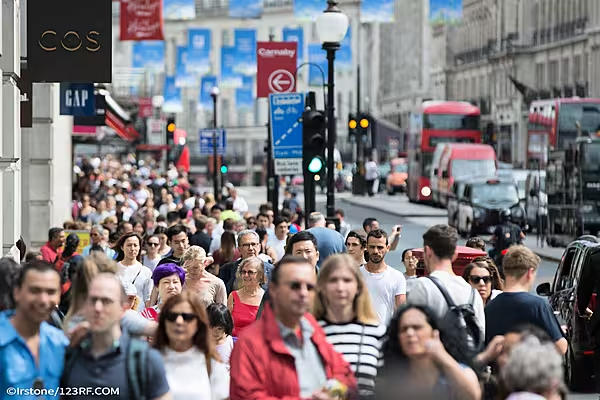Many European retailers have struggled to navigate rising inflation in the past year. However, there appears to be no relief in sight. With grocery store inflation continuing to experience significant increases, those in the industry must find a way to adapt to remain profitable.
The Current State of Grocery Store Inflation In Europe
As rising prices continue to impact consumers and supply chains, retailers face increasing pressure to respond. The grocery sector has been particularly affected, with food prices in some segments skyrocketing in the past year.
Many countries experienced record-high cost increases. For example, German food prices went up by 18.7% between 2021 and 2022, with the Federal Statistical Office noting that the country’s inflation rate was the highest since 1990.
How Retailers Can Navigate Rising Inflation
Enterprises in the grocery retail industry must consider consumer purchasing trends, government action and the value of their operations to navigate rising inflation effectively.
Use Strategic Product Assortment
Generation Z — the demographic with around 40% of all buying power — prefers physical interaction over e-commerce shopping. Product assortment strategies can improve the consumer experience for key groups like this, driving sales.
Additionally, this can subconsciously shift consumer buying habits. According to research, strategic product assortment substantially impacts higher profits and lower costs. Convenience and visibility make people far less price sensitive — a vital advantage in a period of high, ongoing grocery store inflation.
Minimise Bureaucracy
Since buyers within the industry must coordinate shipments, suppliers and trends, organisation enhancements are vital. Retailers must ensure their communication is consistently prompt and efficient. Likely, such a change requires an overhaul of standard practices. Also, new monitoring and auditing tools may be necessary.
Eliminating unnecessary layers of bureaucracy will reduce overhead prices and ensure retailers can quickly react to sudden industry changes. Further, optimising non-core functions removes administrative barriers to increase transparency, improving the ease of management.
Digitally Transform Supply Chains
Supply chain resiliency is of the utmost importance, since it has cascading effects on stock counts, shipment expenses and profit. Since traditional methods and technologies need updating, most retailers must digitally transform their current processes.
If buyers within the grocery retail sector modernise their analog devices and software, they can improve their resiliency. In fact, supply chain digitisation could reduce expenses by 50% while simultaneously increasing revenue.
Implement Everyday Low Pricing
Consumers spent nearly 50% more on the cheapest private-label products between 2022 and 2023. Crucially, they did not increase spending on these items. Rather, they switched stores and brands to offset the impact of grocery store inflation on their budget. In response, retailers must overhaul their pricing structure.
Everyday low pricing is essential for remaining competitive and avoiding unnecessary regulatory scrutiny. Consistently offering better deals than other companies in the industry may initially impact profit margins, but a greater volume of loyal customers offsets retailers’ potential lost earnings.
Leverage Automation
Although no retailer should primarily use spending cuts to navigate rising inflation, it remains a potential supporting strategy. Automation is one of the best technologies for this approach because it reduces overhead costs while boosting productivity rates.
Retailers can use technology ranging from robot process automation to sensors. For example, they could utilise artificial intelligence to update stock counts in real time, improving omnichannel sales. Alternatively, they could use it to collect data on third-party vendors and market trends to optimise shipment ordering.
Experts already estimate retail automation usage will increase to 60% to 65% by 2026. However, with grocery store inflation on the rise, the adoption rate will likely grow substantially faster. If businesses want to remain competitive, they should seriously consider adopting automation.
Implement Value-Based Pricing
In 2022, the average European household spent more on groceries — nearly one-quarter of their budget — than on energy, alcoholic beverages, tobacco, clothing, restaurants or transportation. If retailers use value-based pricing strategies, they can take advantage of consumers’ willingness to spend.
Convincing people a product line is more valuable than alternatives ensures it remains a staple on their shopping list even when it has a higher price. If buyers in the industry strategically coordinate shipments with specific market trends, they can subconsciously cement certain items as 'premium' in consumers’ minds — and successfully navigate rising inflation.
How Does Grocery Store Inflation Impact Retailers?
Consumer grocery prices in the European Union increased by roughly 17% from 2022 to 2023. To put this figure into perspective, the US food inflation rate rose only 7.7% in the same period. Such substantial numbers have serious implications for the sector.
For one, rapid currency devaluation relative to the US dollar means European buyers lose money when doing business with American suppliers. Needless to say, there is no benefit to sacrificing a percentage of profit in a period of extreme economic uncertainty.
Additionally, low consumer confidence often puts policymakers in a challenging position, particularly when faced with looming elections. In response, many felt unprecedented regulatory action was necessary. For instance, public data showing top Swedish retailers were rapidly inflating food prices incentivised the government to pour funding into the country’s competition authority.
Federal involvement extends beyond increased oversight. For example, Spain’s junior coalition partner has proposed capping food prices and mandating a 14% discount on essentials. Ultimately, grocery store inflation impacts more than consumer spending habits — it could jeopardise profit margins and current strategies.
Retailers Must Adapt to Grocery Store Inflation
The only way to overcome the grocery store inflation rampant in Europe is to adapt. Retailers who embrace outdated traditional strategies over modernisation will feel the greatest impact.
To navigate rising inflation successfully, businesses need to counter it with proven, reliable techniques.
Article by Emily Newton, Revolutionized














